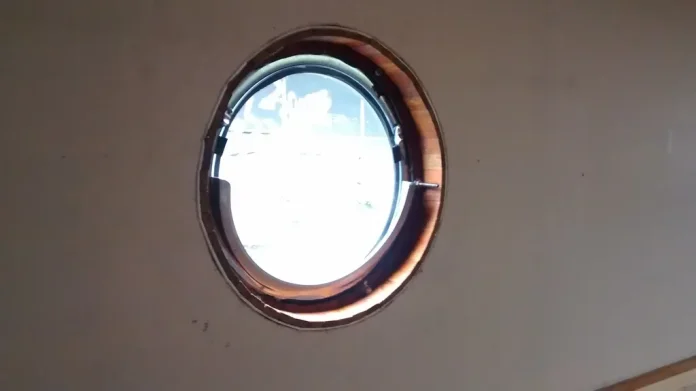When it comes to crafting spaces that reflect character, charm, and function, few design elements stand out quite like a custom wooden porthole. Traditionally found on ships and nautical vessels, the porthole window has navigated its way into residential and cabin design, becoming a sought-after feature for those who appreciate timeless craftsmanship and maritime flair.
Adding a Wooden porthole to your cabin, boat, or even a rustic home offers not only aesthetic appeal but also practical advantages. These circular windows bring in light, offer scenic views, and establish a focal point that naturally draws attention—perfect for interiors that aim to be both functional and visually unique.
A Nautical Tradition with Rustic Appeal
The Maritime Legacy
The circular shape of a porthole wasn’t an arbitrary design choice—it was built that way to endure the stresses of sea travel. This design efficiently distributes pressure, especially under turbulent conditions. While modern living doesn’t require storm resistance, the form itself remains symbolic of adventure, exploration, and a deep connection to the sea.
A Natural Fit for Cabins and Boats
Wood, with its organic texture and warmth, complements the natural aesthetic of cabins and boats. When formed into a circular window, it enhances the intimate, cozy atmosphere often sought in these settings. A custom wooden porthole bridges the past and present—delivering nostalgia with modern craftsmanship.
Benefits of Installing a Wooden Porthole
1. Unique Aesthetic
No other window form quite captures the eye like a wooden porthole. Its round contour breaks up the linear monotony of standard architecture and immediately adds character. Whether it’s mounted in a cabin wall or boat deck, it becomes a piece of visual storytelling.
2. Enhanced Natural Light
Smaller structures like cabins and boats benefit from every bit of natural light. A strategically placed wooden porthole can brighten up a reading nook, galley kitchen, or sleeping area without compromising on wall space.
3. Ventilation Options
Though many portholes are fixed, you can opt for an operable version to provide airflow. In tight quarters—like in a boat’s cabin—this feature is invaluable for comfort and climate control.
4. Durability and Insulation
Wood is an excellent insulator. When sealed and treated properly, wooden porthole frames stand up well to both hot and cold environments. For cabins in colder climates or boats exposed to varying temperatures, this makes them an energy-efficient choice.
Ideal Placement in Cabins
Above the Bed
In small cabin bedrooms, a porthole placed high on the wall brings in morning light while preserving privacy. It also provides a whimsical “window to the trees” effect that’s relaxing and dreamlike.
Staircase Landings
Stairwells often lack light and interest. A round window in this space not only introduces light but adds architectural intrigue.
Kitchen or Dining Area
A porthole by the kitchen table or above a sink lets you enjoy the natural views outside while doing daily tasks. It also helps balance practical and decorative design.
Perfect Uses for Boats
Cabin Entryways
A wooden porthole at the door to a boat’s sleeping cabin gives a classic seafaring look. It provides visibility while still ensuring some privacy.
Bathroom Ventilation
Portholes with opening mechanisms are ideal for small onboard bathrooms. They offer ventilation and light in an otherwise compact, moisture-prone space.
Galley Light Source
A window by the galley kitchen keeps the cooking area well-lit during the day and connects you to the outdoors—even when you’re preparing meals.
Customization Options
Size and Thickness
Depending on the size of your wall or boat panel, you can opt for a compact 12-inch window or go for a grander 24-inch diameter. The thickness of the frame can be adjusted based on the wall’s depth or design preference.
Frame Finishes
- Natural Finish: For a raw, Scandinavian-inspired look that brings the outdoors in.
- Dark Stains: Adds drama and luxury, perfect for polished interiors.
- Painted Options: Bold hues or subtle pastels can be matched to your design palette.
Glass Types
- Clear Glass: Maximizes natural views and lets in the most light.
- Frosted or Textured: For privacy in bathrooms or bedrooms.
- Double-Glazed: Ideal for insulating cabins in cold climates or marine vessels in extreme weather zones.
How to Maintain a Wooden Porthole
Regular Cleaning
Wooden frames need to be dusted and wiped regularly with a damp cloth. Avoid abrasive cleaners that may damage the finish.
Sealing and Refinishing
Apply a protective sealant every few years, especially for exterior or marine use. Boats may require more frequent maintenance due to exposure to salt and moisture.
Check for Moisture
Look for signs of condensation or mold. Good ventilation and properly sealed glass can prevent these issues. In boats, ensure that the seals remain watertight.
Pairing with Complementary Elements
- Wooden Beams and Paneling: Reinforce the rustic cabin vibe.
- Brass or Bronze Hardware: Mirrors the nautical origins of the porthole window.
- Minimalist Furniture: Let the window be the focal point in small spaces by keeping surrounding decor simple.
Final Thoughts: A Round Window with Endless Charm
A custom wooden porthole window offers more than just an opening to the outside world—it’s an architectural accent that tells a story. For cabins tucked away in the woods or boats gently rocking in the harbor, these circular masterpieces bring history, charm, and natural beauty together in one striking design.
Whether you’re building a new retreat or upgrading a seafaring vessel, the wooden porthole is a distinctive feature that balances aesthetics with practicality. In a world of square edges and straight lines, a round, handcrafted window offers a welcome break—a reminder that sometimes, the best view comes in a circle.
